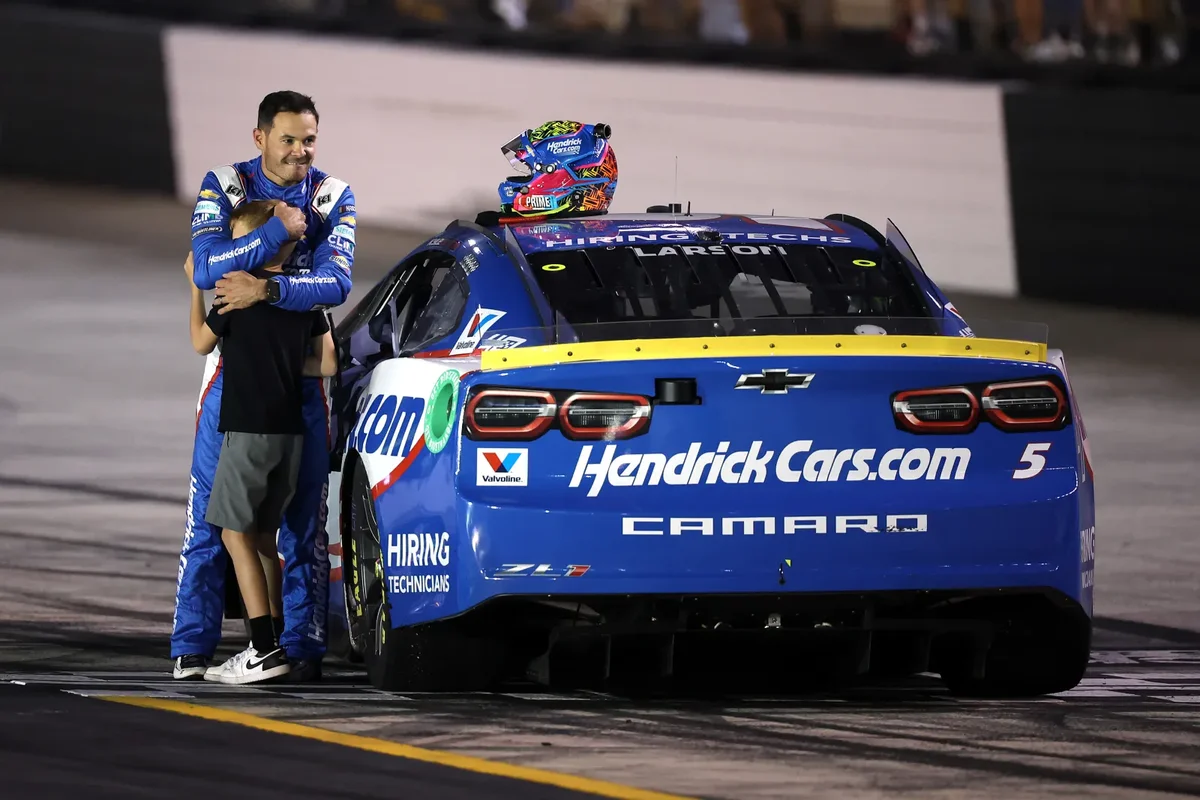Kyle Larson’s NASCAR career reached a major milestone with his 2025 Cup Series championship win, cementing his legacy among motorsports’ greats while delivering Chevrolet its 34th Driver Championship. This achievement revisits the early crossroads in his journey, when Larson’s path nearly aligned with Toyota before a pivotal turn redirected his future.
Larson’s initial rise came in 2011 while racing for Keith Kunz Motorsports’ midget program under Toyota’s wing. He recounted those early days:
“I remember them taking me to the Chicagoland Speedway and meeting with a bunch of different teams and stuff. All those teams needed money, obviously, and I was a nobody at that point.”
– Kyle Larson, NASCAR Champion.
At that time, Toyota lacked a structured driver development pipeline in NASCAR, leaving Larson unable to progress within their system. The opportunity to join Chip Ganassi Racing changed his fortunes, prompting a shift to Chevrolet and propelling his career forward. Toyota, recognizing this missed chance, soon established their own development program, shaping their approach to small-team drivers in the process.
The ripple effects from Toyota’s decision became evident when Christopher Bell, now a leading driver for Joe Gibbs Racing, advanced through Toyota’s new program. Meanwhile, Larson consistently credited Chevrolet for the steadfast support that helped drive his championship ambitions, noting how the lessons learned by Toyota influenced its later recruitment and talent-building strategies.
The Roots and Rivalry: Larson and Bell’s Diverging Paths
Kyle Larson and Christopher Bell share a foundation in dirt racing, bringing similar techniques and instincts to the track. This common ground has bred both familiarity and a unique rivalry as each driver advanced along their distinct routes to NASCAR prominence. Bell’s perspective on racing against peers like Larson reveals an appreciation of their shared skill set, as well as the strategic adjustments required to compete at the highest level.

Addressing his competitive approach, Bell explained:
“I think it’s just their tendencies. In the series, you get to learn about other drivers’ tendencies and what they do. And you know that if you have [Kyle] Larson lining up behind you, you don’t want to give him the top. If you have Kevin Harvick lining up behind you, you don’t want to give him the bottom.”
– Christopher Bell, Joe Gibbs Racing Driver.
The adaptability honed from dirt racing, where drivers constantly change lanes, gives competitors like Larson and Bell an edge over those with more conventional training on paved tracks. Drivers from a pavement background are often more rigid in lane choices, whereas dirt racers are known for their versatility and bold maneuvers. This fundamental difference informs not only racing style but also head-to-head dynamics between drivers with such varied upbringings.
Ultimately, both drivers’ successes demonstrate that talent and determination enable racers to ascend through NASCAR’s ranks, whether through structured development paths or by seizing unexpected opportunities. Kyle Larson’s NASCAR career, marked by his ability to thrive despite early setbacks, highlights how pivotal decisions and organizational strategies can shape the sport’s elite – and how missed chances can inspire both redemption and rivalry.

